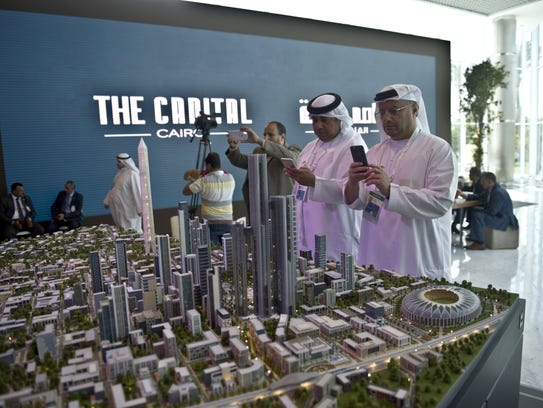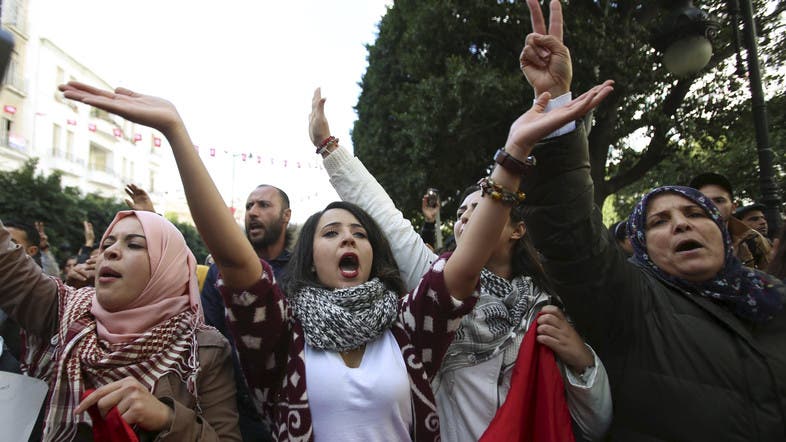Misreeya
Pro
Egypt is building a new capital -- and China is bankrolling it
CAIRO — The Egyptian government is determined to build a new capital in the desert 28 miles southeast of this iconic city — and it's no longer a mirage now that China is bankrolling most of the $45 billion project.
Work has already begun on a 270-square-mile tract of army-owned land that would house as many as 5 million people when completed in 2021. PresidentAbdel Fattah al-Sisi, who is pushing the project, has his skeptics, who wonder how cash-strapped Egypt can afford such an ambitious development.
Enter the Chinese. On Sunday, China Fortune Land Development announced it would invest $20 billion in the still-unnamed capital. That comes on top of a $15 billion agreement by China’s state-owned construction company to finance 14 government buildings, a zone for trade fairs and a 5,000-seat conference center that would be the largest in Africa.
This week, the Egyptian government also announced it was speaking with the Chinese about building a university in the new city. China's role is the latest example of using its new-found wealth to expand its influence in global affairs.
The move was prompted by the chaos and congestion of this ancient city of nearly 30 million people, a third of Egypt's population.
“I can say with total honesty that this project is 20 years overdue,” said Mohsen Salah El Din, chief executive of the state-owned Arab Contractors, which is involved in the project.
“We had to find an alternative location to suck this congestion out of Cairo and relocate where the government would be and where the civil servants working in these agencies would live so that they don't have to commute long distances between home and work,” he said.
Supporters of the move say Egypt is following a proven model: Turkey, India and Brazil all moved their capitals in the 20th century.
“Egypt's administrative capital is not different from Ankara, New Delhi or Brasilia,” said Zeyad Elkelani, a political science professor at Cairo University. He said the new city would help the president reduce unemployment and streamline the country's massive bureaucracy — an estimated 7 million public workers.
Many government workers won’t want to leave Cairo and move to the new capital, Elkelani said. Their families pass down their Cairo apartments from generation to generation. And there is no culture of commuting on a highway to work in the country. The result will be a welcome attrition in government employment.

A delegation looks at a scale model of the new Egyptian capital displayed at the Red Sea resort of Sharm el-Sheik on March 14, 2015. (Photo: Khaled Desouki, AFP/Getty Images)
“The new capital is an important step to make room for the private sector,” Elkelani said. “The bureaucracy has been choking business in Egypt and the residents of Cairo.”
Several hundred apartment buildings already have gone up in the new city, and construction crews are building roads and laying sewage lines.
In a sign of how determined the government is to move, the Interior Ministry announced it would phase out operations by July 2017 at the Mogamma building, where 30,000 state employees handle everything from new business registrations to issuing passports. The ministry plans to convert the landmark building into a hotel.
Mogamma dominates downtown’s Tahrir Square, where anti-government demonstrations in 2011 led to the ouster of longtime President Hosni Mubarak.
“Nobody likes coming here,” said Razan Bishara, a biology student who recently accompanied a visiting French friend to the building to renew her tourist visa. “But at least I can take the Metro to Tahrir Square. I don’t know how we are going to get bureaucratic stuff like this done when they move this place to the middle of the desert.”
Khaled Abbas, an assistant minister at the Ministry of Housing, said his agency will be the first to move. "And we’ve already designated the area for a new presidential palace and a nearby presidential district with 25,000 housing units in the works there,” he said.
Still to be determined: what to name the new city.
Officials now refer to it as the “New Administrative Capital,” but that doesn't generate excitement for an audacious plan that will include green areas comparable to New York’s Central Park, soaring skyscrapers rivaling Dubai's unique towers, an airport bigger than London’s Heathrow and an amusement park that outdoes Disneyland.
“The name is an issue,” Abbas said. "We are working on branding now."
If anyone thinks the project is diverting needed funds to improve Cairo’s crumbling infrastructure and other pressing needs, they aren't saying so publicly for fear of retribution from a military-run government that ousted Egypt's first democratically elected president in 2013 after renewed popular unrest.
Nezar Al Sayyad, an Egyptian-born professor of architecture at the University of California-Berkeley who is now a U.S. citizen, was detained briefly last year at Cairo International Airport and questioned about humorous jabs he made on his Facebook page about the new city.
“The whole thing reflects the top-down thinking of the government,” Al Sayyad said. “It is a military-style operation on land that is owned and being sold by the army.”
“I called the new city Sisi-land," Al Sayyad said, "and that upset them.
Egypt is building a new capital -- and China is bankrolling it
CAIRO — The Egyptian government is determined to build a new capital in the desert 28 miles southeast of this iconic city — and it's no longer a mirage now that China is bankrolling most of the $45 billion project.
Work has already begun on a 270-square-mile tract of army-owned land that would house as many as 5 million people when completed in 2021. PresidentAbdel Fattah al-Sisi, who is pushing the project, has his skeptics, who wonder how cash-strapped Egypt can afford such an ambitious development.
Enter the Chinese. On Sunday, China Fortune Land Development announced it would invest $20 billion in the still-unnamed capital. That comes on top of a $15 billion agreement by China’s state-owned construction company to finance 14 government buildings, a zone for trade fairs and a 5,000-seat conference center that would be the largest in Africa.
This week, the Egyptian government also announced it was speaking with the Chinese about building a university in the new city. China's role is the latest example of using its new-found wealth to expand its influence in global affairs.
The move was prompted by the chaos and congestion of this ancient city of nearly 30 million people, a third of Egypt's population.
“I can say with total honesty that this project is 20 years overdue,” said Mohsen Salah El Din, chief executive of the state-owned Arab Contractors, which is involved in the project.
“We had to find an alternative location to suck this congestion out of Cairo and relocate where the government would be and where the civil servants working in these agencies would live so that they don't have to commute long distances between home and work,” he said.
Supporters of the move say Egypt is following a proven model: Turkey, India and Brazil all moved their capitals in the 20th century.
“Egypt's administrative capital is not different from Ankara, New Delhi or Brasilia,” said Zeyad Elkelani, a political science professor at Cairo University. He said the new city would help the president reduce unemployment and streamline the country's massive bureaucracy — an estimated 7 million public workers.
Many government workers won’t want to leave Cairo and move to the new capital, Elkelani said. Their families pass down their Cairo apartments from generation to generation. And there is no culture of commuting on a highway to work in the country. The result will be a welcome attrition in government employment.

A delegation looks at a scale model of the new Egyptian capital displayed at the Red Sea resort of Sharm el-Sheik on March 14, 2015. (Photo: Khaled Desouki, AFP/Getty Images)
“The new capital is an important step to make room for the private sector,” Elkelani said. “The bureaucracy has been choking business in Egypt and the residents of Cairo.”
Several hundred apartment buildings already have gone up in the new city, and construction crews are building roads and laying sewage lines.
In a sign of how determined the government is to move, the Interior Ministry announced it would phase out operations by July 2017 at the Mogamma building, where 30,000 state employees handle everything from new business registrations to issuing passports. The ministry plans to convert the landmark building into a hotel.
Mogamma dominates downtown’s Tahrir Square, where anti-government demonstrations in 2011 led to the ouster of longtime President Hosni Mubarak.
“Nobody likes coming here,” said Razan Bishara, a biology student who recently accompanied a visiting French friend to the building to renew her tourist visa. “But at least I can take the Metro to Tahrir Square. I don’t know how we are going to get bureaucratic stuff like this done when they move this place to the middle of the desert.”
Khaled Abbas, an assistant minister at the Ministry of Housing, said his agency will be the first to move. "And we’ve already designated the area for a new presidential palace and a nearby presidential district with 25,000 housing units in the works there,” he said.
Still to be determined: what to name the new city.
Officials now refer to it as the “New Administrative Capital,” but that doesn't generate excitement for an audacious plan that will include green areas comparable to New York’s Central Park, soaring skyscrapers rivaling Dubai's unique towers, an airport bigger than London’s Heathrow and an amusement park that outdoes Disneyland.
“The name is an issue,” Abbas said. "We are working on branding now."
If anyone thinks the project is diverting needed funds to improve Cairo’s crumbling infrastructure and other pressing needs, they aren't saying so publicly for fear of retribution from a military-run government that ousted Egypt's first democratically elected president in 2013 after renewed popular unrest.
Nezar Al Sayyad, an Egyptian-born professor of architecture at the University of California-Berkeley who is now a U.S. citizen, was detained briefly last year at Cairo International Airport and questioned about humorous jabs he made on his Facebook page about the new city.
“The whole thing reflects the top-down thinking of the government,” Al Sayyad said. “It is a military-style operation on land that is owned and being sold by the army.”
“I called the new city Sisi-land," Al Sayyad said, "and that upset them.
Egypt is building a new capital -- and China is bankrolling it

